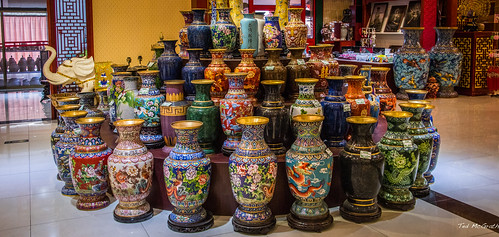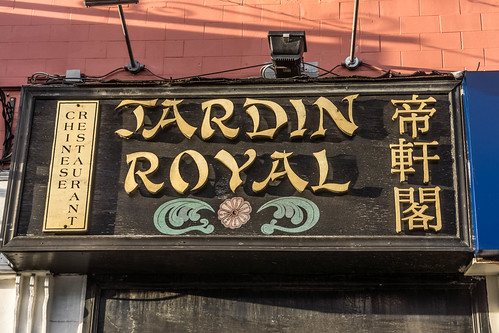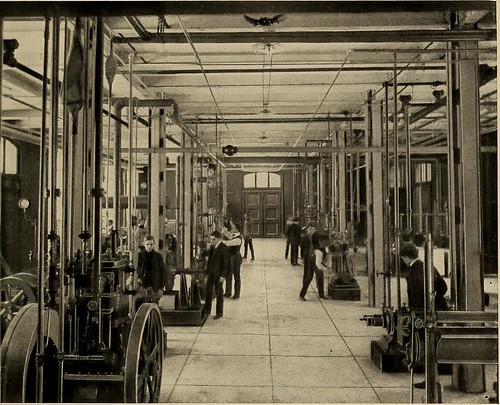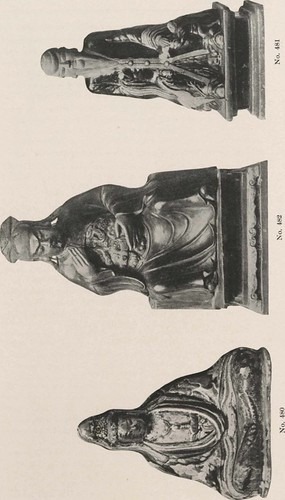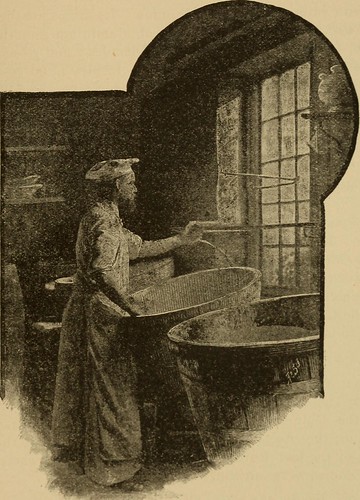(Posted from China Injection Mold blog)
A few nice plastic molded part images I found:
Printing the past: 3-D archaeology and the first Americans
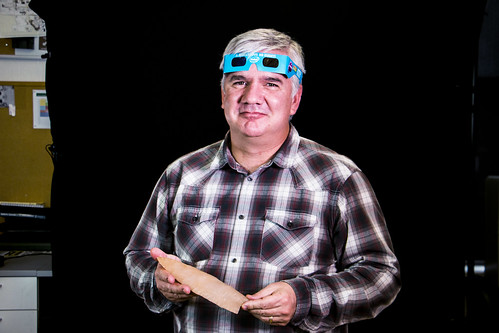
Image by BLMOregon
Photos were captured at the Pacific Slope Archaeological Laboratory on the Oregon State University Campus in Corvallis, Dec. 13, 2016, to accompany the feature story below: "Printing the past: 3-D archaeology and the first Americans." Article online here (and below): goo.gl/viKEZF
Photo by Matt Christenson, BLM
Story by Toshio Suzuki, BLM
—————————————-
For the first Americans, and the study of them today, it all starts with a point.
A sharp point fastened to a wooden shaft gave the hunter 13,000 years ago a weapon that could single-handedly spear a fish or work in numbers to take down a mammoth.
For a prehistoric human, these points were the difference between life and death. They were hunger-driven, handmade labors of love that took hours to craft using a cacophony of rock-on-rock cracks, thuds and shatters.
They have been called the first American invention, and some archaeologists now think 3-D scanning points can reveal more information about both the technology and the people.
The Pacific Slope Archaeological Laboratory at Oregon State University takes up only a few rooms on the ground floor of Waldo Hall, one of the supposedly haunted buildings on campus.
There are boxes of cultural history everywhere, and floor-to-ceiling wood cabinets with skinny pull-out drawers housing even more assets, but the really good stuff, evidence of the earliest known cultures in North America, lives in an 800-pound gun safe.
Loren Davis, anthropology professor at OSU and director of the lab, thinks 3-D scanning, printing, and publishing can circumvent the old traditions of the field, that artifacts are only to be experienced in museums and only handled by those who have a Ph.D.
“We are reimagining the idea of doing archaeology in a 21st century digital way,” said Davis. “We don’t do it just to make pretty pictures or print in plastic, we mostly want to capture and share it for analysis,” he added.
Nearby in the L-shaped lab, one of his doctoral students is preparing to scan a point that was discovered on Bureau of Land Management public lands in southeast Oregon.
Thousands of points have been unearthed since the 1930s in North America, the first being in eastern New Mexico near a town called Clovis. That name is now known worldwide as representing the continent’s first native people.
More recently, though, other peoples with distinctive points were found elsewhere, and some researchers think it means there was differing technology being made at the same time, if not pre-Clovis.
One such location is the Paisley Caves in southern Oregon ― one of the many archaeologically significant sites managed by the BLM.
The earliest stem point from Paisley Caves was scanned at Davis’ lab and a 3-D PDF was included in a 2012 multi-authored report in the journal Science.
Davis estimates his lab at OSU has scanned as many as 400 points, including others from BLM-managed lands in Idaho, Nevada, Oregon and Washington.
More scans would mean a bigger database for comparing points and determining what style they are.
“Ideally, we want to get as many artifacts scanned as possible,“ said Davis. “The BLM offers a lot of access to public data ― this is just another way of doing it.”
—
Transforming a brittle piece of volcanic glass, by hand, into a beautiful and deadly 4-inch-long spear point is a process.
In one hand would be a hard shaping rock, or maybe a thick section of antler, and in the other would be the starter stone, which in addition to igneous could be jasper, chert, or any other chippable rock that creates a hide-puncturing level of sharpness.
After what might be hundreds of controlled strokes and rock rotations, the rough shape of a lance or spear tip would take form. Discarded shards of stone would often result in more points, or other useful tools like scrapers and needles.
Clovis points are distinguished by their length, bifacial leaf shape and middle channels on the bottom called flutes. Eventually the repetitive flaking of the point would stop, and the hunter would use precise pressure points to create the flute on one or each side that likely helped slot the finished product into a spear-like wooden pole.
The hunter was now mobile and ready to roam.
—
Prior to 3-D scanning, OSU doctoral student Sean Carroll picks up a can of Tinactin, gives it the obligatory shake, and completely covers “one of the oldest technologies in North America” with antifungal spray.
The talc and alcohol from the athlete’s foot remedy helps the software see even the slightest indents in the point, and it rubs right off afterwards.
“I want to scan all the Clovis I can get my hands on,” said Carroll, who came to OSU because of Davis’ 3-D lab and is using the medium as a big part of his dissertation.
Two random items, a power plug adapter and a ball of clay, are placed on each side of the fluted point to give the camera and light projector perspective. The objects create margins that force the structured light patterns to bend and capture more of the point’s surface detail.
Even so, like the hunter rotating the shaping rock, the archaeologist has to rotate the foam square holding the three items. Each scan takes about six seconds.
Carroll and Davis estimate that the learning curve for this process was about 100 hours. One hundred hours of trial and error — and a lot of watching YouTube videos — for a finished product that they think is indisputably worth it.
A completed 3-D scan of a point will have about 40,000 data points per square inch. The measurements are so precise, they can determine the difference between flake marks as thin as a piece of paper.
Davis says no archaeologist with a pair of calipers can come close to measuring the data obtained via 3-D, because simply, “there are some jobs that robots are really good at.”
“If the end game is measurements, well you could spend your whole life with a pair of calipers trying to achieve what we can do in 10 minutes,” said Davis.
—
Last year, the famous human relative nicknamed Lucy had 3-D scans of her 3.2 million year old bones published in the journal Nature.
In 2015, archaeologists from Harvard University completed a 3-D scan of a winged and human-headed stone bull from Mesopotamia that stands 13 feet high at the Louvre Museum.
And the Smithsonian Institution is currently beta testing a website dedicated to publishing 3-D models from its massive collection, including molds of President Abraham Lincoln’s face and the entire Apollo 11 command module.
All of these new-school efforts are based upon the old-school scientific principles of preservation and promotion.
Rock points, fossils, hieroglyphics — various forms of cultural assets are susceptible to environmental conditions and not guaranteed to be around forever. Three-dimensional scanning is the most accurate way to digitally preserve these items of merit.
Once accurate preservation is done, there are opportunities for promoting not just science, but specific research goals.
In the case of the Lucy bones, scientists hope that crowdsourcing the 3-D data will help get more experts to look at the fossils and prove that the tree-dwelling ape died from a fall.
When it comes to comparing one specific stemmed point to an entire hard drive of scanning data, BLM archaeologist Scott Thomas thinks the work being done at the OSU lab can move archaeology to a new level.
“The 3-D scanning method blows anything we have done out of the water,” said Thomas.
That ability to compare points can lead to insights on how these hunting tools moved over geography, and even expand theories about how native groups learned new technologies.
“It’s going to be a really powerful tool someday — not too far off,” said Thomas.
While long-term data analysis may not be the sexiest form of archaeology, holding a 3-D printed stem point is a pretty cool educational tool.
Davis of OSU has incorporated 3-D prints into his classes and said his students are able to make a tactile connection with artifacts that otherwise are not available.
“The students really enjoy these printed and digital models and often say that they are almost like the real thing,” said Davis.
—
This spring, Davis is traveling to Magadan, Russia — aka Siberia — to inspect and scan some points that may be linked to Clovis peoples.
The goal in Siberia, of course, is to further expand the 3-D database. He is specifically interested in comparing them to stems from a BLM-managed site he excavated in Idaho called Cooper’s Ferry.
As his student, Carroll, begins to clean up and put the scanned points into their individually labeled ziplocked bags, Davis can’t help but mention how much easier international research could be with 3-D scanning.
“You can share cultural resource info with people in other countries and you don’t have to come visit,” he said, adding that Russia isn’t the easiest country to enter.
“It’s as easy as sending an email,” Carroll agreed.
Davis then mentioned his 11-year-old child and how much of school curriculum these days is web-based as opposed to text-based.
“There’s nothing wrong with books, I’m a huge fan of books, but it’s a different way of learning,” said the archaeology professor.
And with that, he made another point.
— by Toshio Suzuki, tsuzuki@blm.gov, @toshjohn
Best places to find 3-D archaeology online:
— Sketchfab.com is one of the biggest databases on the web for 3-D models of cultural assets. Institutions and academics alike are moving priceless treasures to the digital space for all to inspect. Two examples: via the British Museum, a 7.25-ton statue of Ramesses II is available for viewing and free download; and via archaeologist Robert Selden Jr., hundreds of 3-D models are open to the public for study, including several Clovis points from the Blackwater Draw National Historic Site in New Mexico.
— The Smithsonian Institution is bringing the best of American history to a new audience via their 3-D website (3d.si.edu). Amelia Earhart’s flight suit? Check. Native American ceremonial killer whale hat? Check. Face cast of President Abraham Lincoln? Check and check — there are two. And their biggest 3-D scan is still coming: the 184-foot-long space shuttle Discovery.
— Visitors to Africanfossils.org can filter 3-D model searches by hominids, animals and tools, and also by date, from zero to 25 million years ago.
The sleek website, with partners like National Geographic and the National Museums of Kenya, makes it easy to download or share 3-D scans, and each item even comes with a discovery backstory and Google map pinpointing exactly where it was found.
Read more about
Cool Plastic Molded Part images
